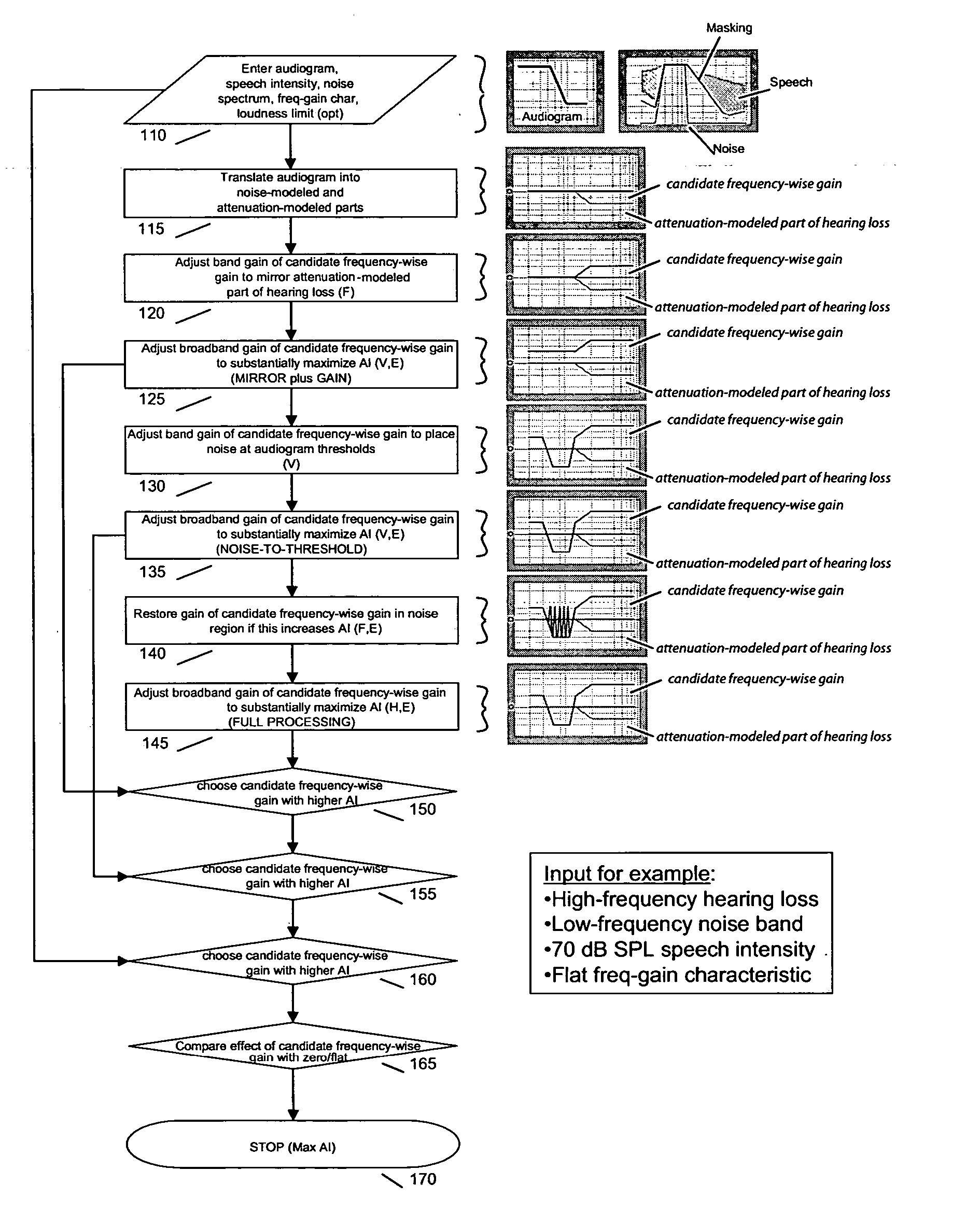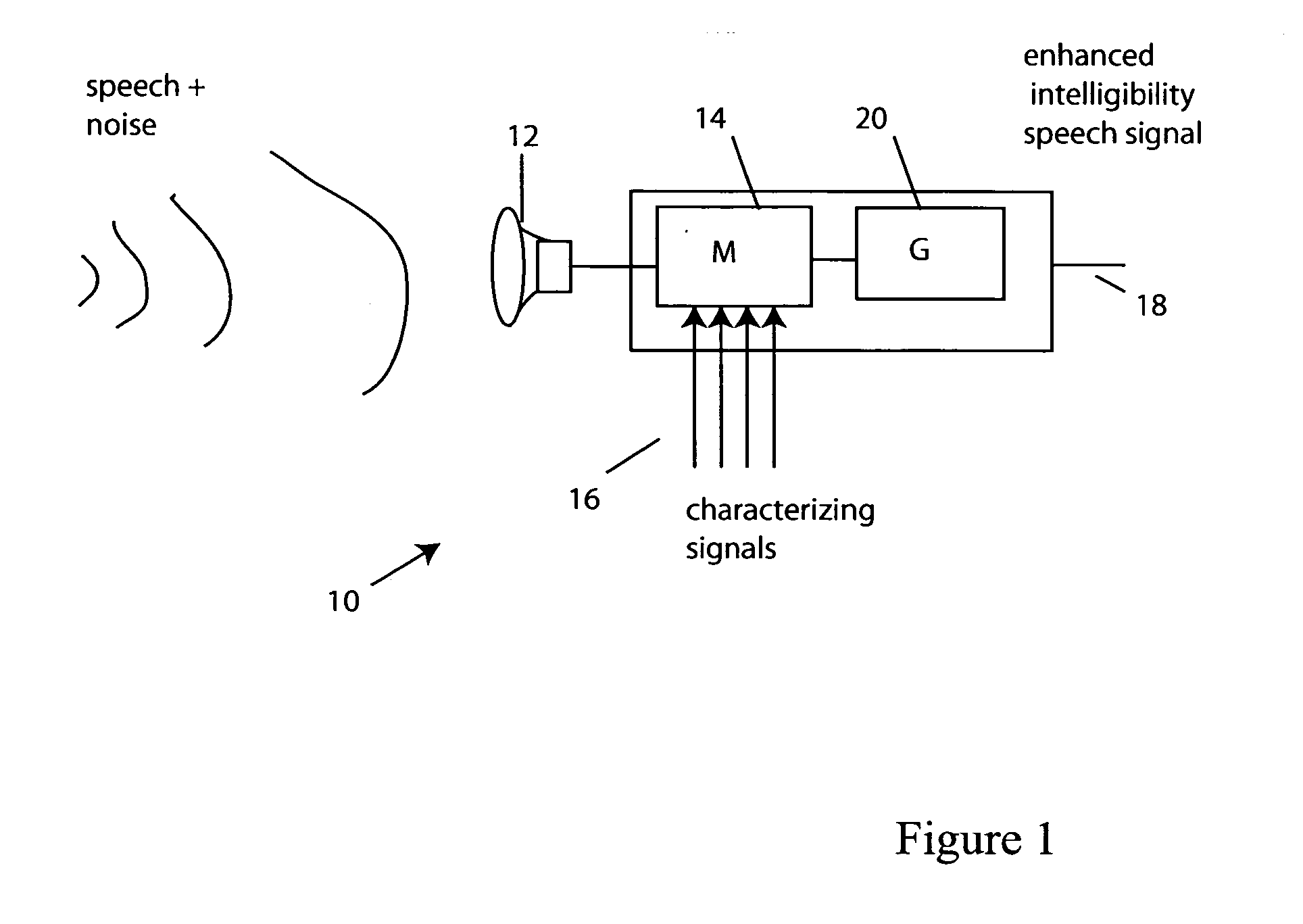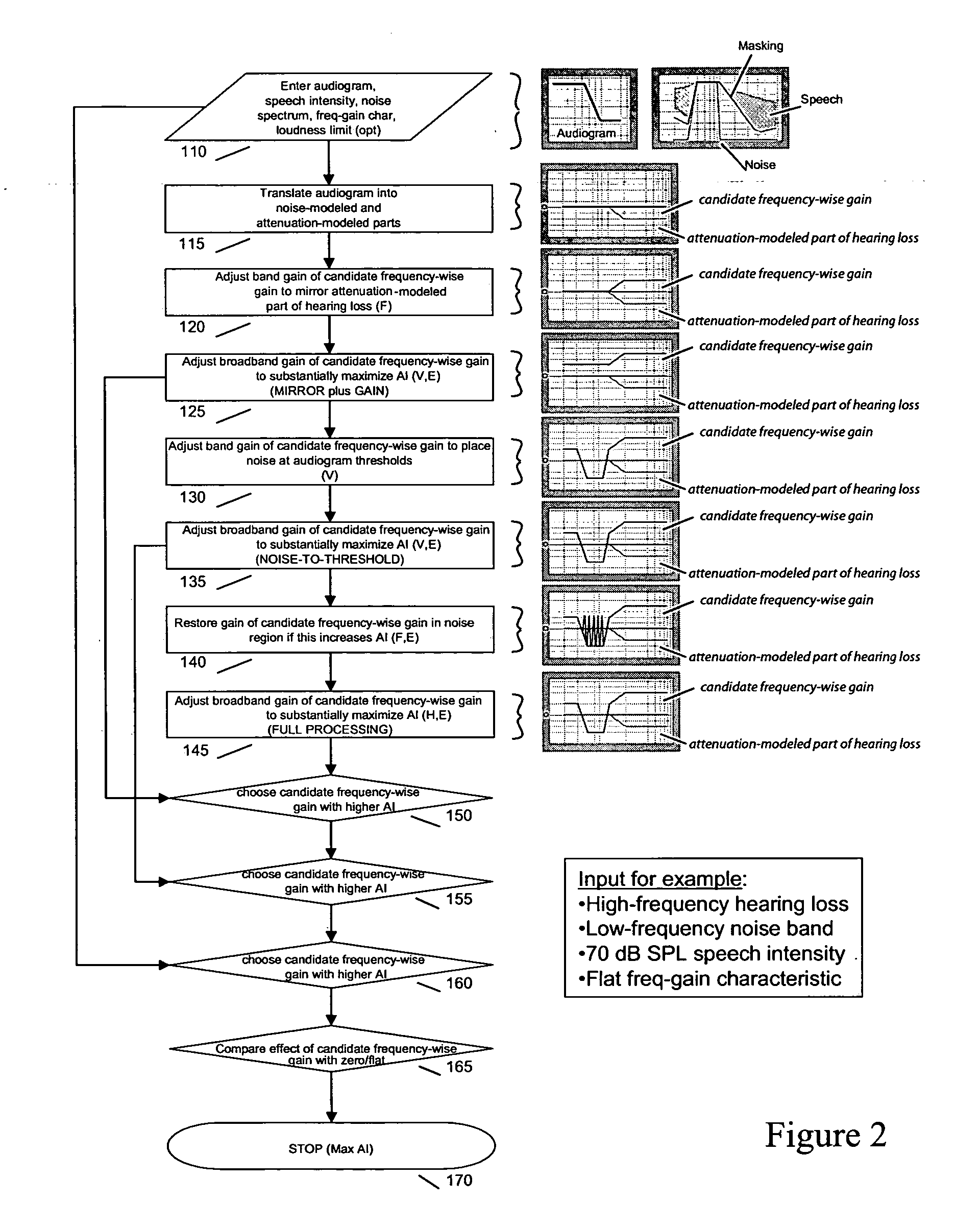Methods and apparatus for maximizing speech intelligibility in quiet or noisy backgrounds
a technology of speech intelligibility and background noise, applied in the field of speech signal processing, can solve the problems of aging cochlea damage, speech partially or completely unintelligible, and inability to repair the damage of aging cochlea, so as to enhance the intelligibility of speech contained, and maximize the intelligibility metric of the communication path
- Summary
- Abstract
- Description
- Claims
- Application Information
AI Technical Summary
Benefits of technology
Problems solved by technology
Method used
Image
Examples
Embodiment Construction
[0021] Overview
[0022]FIG. 1 depicts a intelligibility enhancing device 10 according to one practice of the invention. This can be a hearing aid, assistive listening device, telephone or other speech deliver system (e.g., a computer telephony system, by way of non-limiting example), mobile telephone, personal music delivery system, public-address system, sound system, speech generating system (e.g., speech synthesis system, by way of non-limiting example), or other audio devices that can be incorporated into the communications path of speech to a listener, including the speech source itself. In this regard, the listener is typically a human subject though the “listener” may comprise multiple subjects (e.g., as in the case of intelligibility enhancement via a public address system), one or more non-human subjects (e.g., dogs, dolphins or other creatures), or even inanimate subjects, such as (by way of non-limiting example) computer-based speech recognition programs. The device 10 inc...
PUM
 Login to View More
Login to View More Abstract
Description
Claims
Application Information
 Login to View More
Login to View More - R&D
- Intellectual Property
- Life Sciences
- Materials
- Tech Scout
- Unparalleled Data Quality
- Higher Quality Content
- 60% Fewer Hallucinations
Browse by: Latest US Patents, China's latest patents, Technical Efficacy Thesaurus, Application Domain, Technology Topic, Popular Technical Reports.
© 2025 PatSnap. All rights reserved.Legal|Privacy policy|Modern Slavery Act Transparency Statement|Sitemap|About US| Contact US: help@patsnap.com



